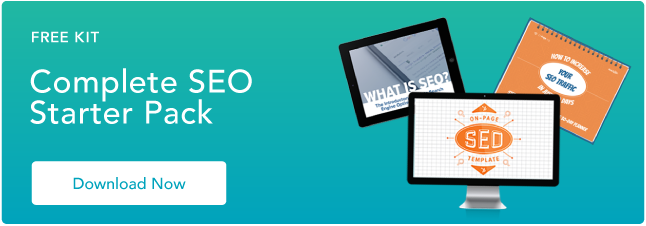 The following is a guest post by Tina Rawlins. Rawlins is a Digital Marketing Specialist forymarketing, who manages SEO and Inbound Marketing campaigns for ecommerce and lead generation clients, and a provider on theHubSpot Service MarketplaceforOn-Page SEOandOff-Page SEOservices. You can follow her on Twitter at@googlegirlor read herblog.
The following is a guest post by Tina Rawlins. Rawlins is a Digital Marketing Specialist forymarketing, who manages SEO and Inbound Marketing campaigns for ecommerce and lead generation clients, and a provider on theHubSpot Service MarketplaceforOn-Page SEOandOff-Page SEOservices. You can follow her on Twitter at@googlegirlor read herblog.
Natural Search Engine Optimization (SEO) can be a confusing and contradictory topic even amongst the industry’s most recognized experts. Organization, directories, trade events and publishers (online and offline) can endlessly debate the finer points ofSEO best (and worst) practices. So what can companies and marketers do to sift through the noise oflink buildingand off-page SEO.
First, understand that while there are nuances to SEO approaches, the fundamental truth is that proper SEO should include efforts in the two primary areas that contribute to a site’s search rankings by search engine algorithms:
1. On-Page SEO Factors:What search engine crawlers can discern from thecontent and structure of your site.
2. Off-Page SEO Factors:What search engines can determine about the linking structure of other sites, and the sites inter-related to those sites, in relation to your site.
To help clarify your off-page SEO approach and enable your organization to move forward, we’ll explore the ABCs of SEO tactics, beginning alphabetically with A, for Article Marketing. Follow-up blog posts will explore Blog Marketing, Comments & Ratings, Directories & Profile Building, and more.
A is for … Article Marketing
A well written article contains targeted content for publishers and often subtly advertises products and services. Most articles are hosted by article directory sites and reprinted by webmasters with topical content needs. Including keywords and links within articles adds SEO value to advertisers.Be Clear and Direct
创建一篇文章,是直接对y的值ou mention in your title. Do not repeat your title in the subtitles. Typically articles are 400-800 words. Consider separating your article content into smaller portions and adding subheadings to create a web friendly format.Create Unique Headlines
Review your unique titles in the search engines to track your article pickup. Also review your website analytics for referrers as an indicator of traffic from article directory sites.Use articles to promote additional web assets:
- Hosted Content (social networking sites, image sharing sites, profile sites)
- Bookmarked or promoted website pages in Digg and similar sites
- Downloads or Whitepapers using tracked links
- Unique Video or Flash Views on a landing page
- Unique Title Mentions in Twitter
- Links to Promoted Blog Articles
- Promote RSS Feed URLs
Develop Unique Content
Develop written content that invites people to click or take action several times in the text. Promote additional free content where you can track, interact with, or engage the reader in asocial mediaplatform.Note: Consider using social platform API’s to allow users to join your site using social networking login credentials.
Make your content easy to share! If your article is a downloadable document, consider adding a twitter button to a PDF, then add a Social Media Widget to the pages of your document. If your article is being submitted to directories, add links in the resources sections of your submissions to your social sharing site.
Request Feedback
Send article content out to a few friends, family, and coworkers and ask for their responses. Find a few people who represent your target audience and get their responses. Specifically ask them to evaluate your article and give their honest opinions. Your article is a long term marketing asset. Your social network can give you important feedback on the voice, length, and resources of your article.
What other tips do you have?

Originally published Aug 25, 2010 9:00:00 AM, updated October 20 2016
Topics:
SEO and Social MediaDon't forget to share this post!
Related Articles
Expand Offer
Social Media Content Calendar Template
Get it now